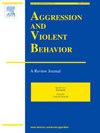Comparison of students experiencing bias-based and non-bias-based bullying: Proportions of bullying victims, perceived bullying effects, and the buffering role of social support
IF 3.4
2区 心理学
Q1 CRIMINOLOGY & PENOLOGY
引用次数: 0
Abstract
This study compares victims of bias-based and non-bias-based bullying in terms of their respective proportions across years and their perceived negative effects of bullying on self-esteem, social relationships, schoolwork, and physical health. The ordered logit model was conducted using a national sample of adolescents aged 12 to 18 in the United States to test the differential effects associated with experiencing bias-based bullying and the buffering role of social support, as suggested by the Minority Stress Theory. From 2015 to 2022, the proportion of students who experienced only non-bias-based bullying remained relatively steady before declining in 2022, whereas the proportion of students who reported being bullied and experienced at least some bias-based bullying showed a gradual upward trend over the same period. Bullying victims who report negative effects are more likely to have low and moderate than high levels of bullying effects. For each level of bullying effects (low, moderate, and high), victims of bias-based bullying have a higher probability of having effects than victims of non-bias-based bullying. Female students are more vulnerable than male students to having high levels of perceived bullying effects on self-esteem, social relationships, schoolwork, and physical health. Social support ameliorates the negative effects of bullying victimization and an increase in social support benefits the victims of bias-based bullying more than the victims of non-bias-based bullying.
有偏见与无偏见霸凌学生的比较:霸凌受害者比例、感知霸凌效应和社会支持的缓冲作用
本研究比较了基于偏见和非基于偏见的欺凌受害者的比例,以及他们认为欺凌对自尊、社会关系、学业和身体健康的负面影响。有序logit模型使用美国12至18岁的全国青少年样本来测试与经历基于偏见的欺凌和社会支持缓冲作用相关的差异效应,正如少数群体压力理论所建议的那样。从2015年到2022年,仅遭受非基于偏见的欺凌的学生比例保持相对稳定,直到2022年才有所下降,而报告遭受欺凌并至少经历过一些基于偏见的欺凌的学生比例在同一时期呈逐渐上升趋势。报告负面影响的欺凌受害者更有可能具有低和中等程度的欺凌影响,而不是高水平的欺凌影响。对于每个级别的欺凌效应(低、中、高),基于偏见的欺凌的受害者比非基于偏见的欺凌的受害者产生影响的可能性更高。女学生比男学生更容易在自尊、社会关系、学业和身体健康方面受到高水平的感知欺凌影响。社会支持改善了欺凌受害者的负面影响,社会支持的增加对基于偏见的欺凌受害者的好处大于非基于偏见的欺凌受害者。
本文章由计算机程序翻译,如有差异,请以英文原文为准。
求助全文
约1分钟内获得全文
求助全文
来源期刊

Aggression and Violent Behavior
Multiple-
CiteScore
7.50
自引率
4.30%
发文量
63
期刊介绍:
Aggression and Violent Behavior, A Review Journal is a multidisciplinary journal that publishes substantive and integrative reviews, as well as summary reports of innovative ongoing clinical research programs on a wide range of topics germane to the field of aggression and violent behavior. Papers encompass a large variety of issues, populations, and domains, including homicide (serial, spree, and mass murder: sexual homicide), sexual deviance and assault (rape, serial rape, child molestation, paraphilias), child and youth violence (firesetting, gang violence, juvenile sexual offending), family violence (child physical and sexual abuse, child neglect, incest, spouse and elder abuse), genetic predispositions, and the physiological basis of aggression.
 求助内容:
求助内容: 应助结果提醒方式:
应助结果提醒方式:


